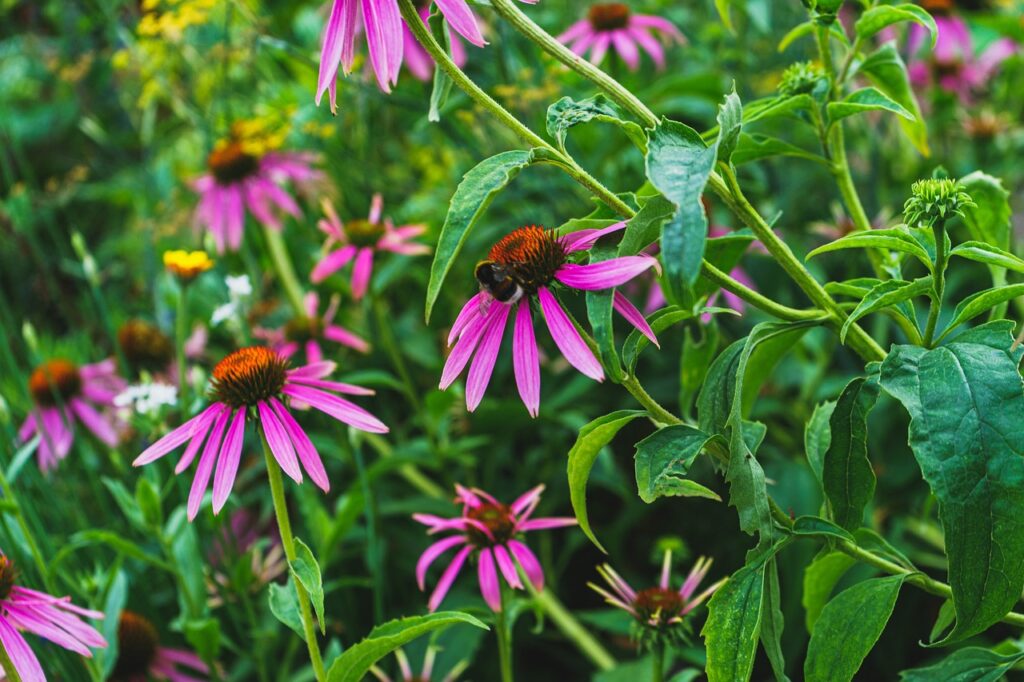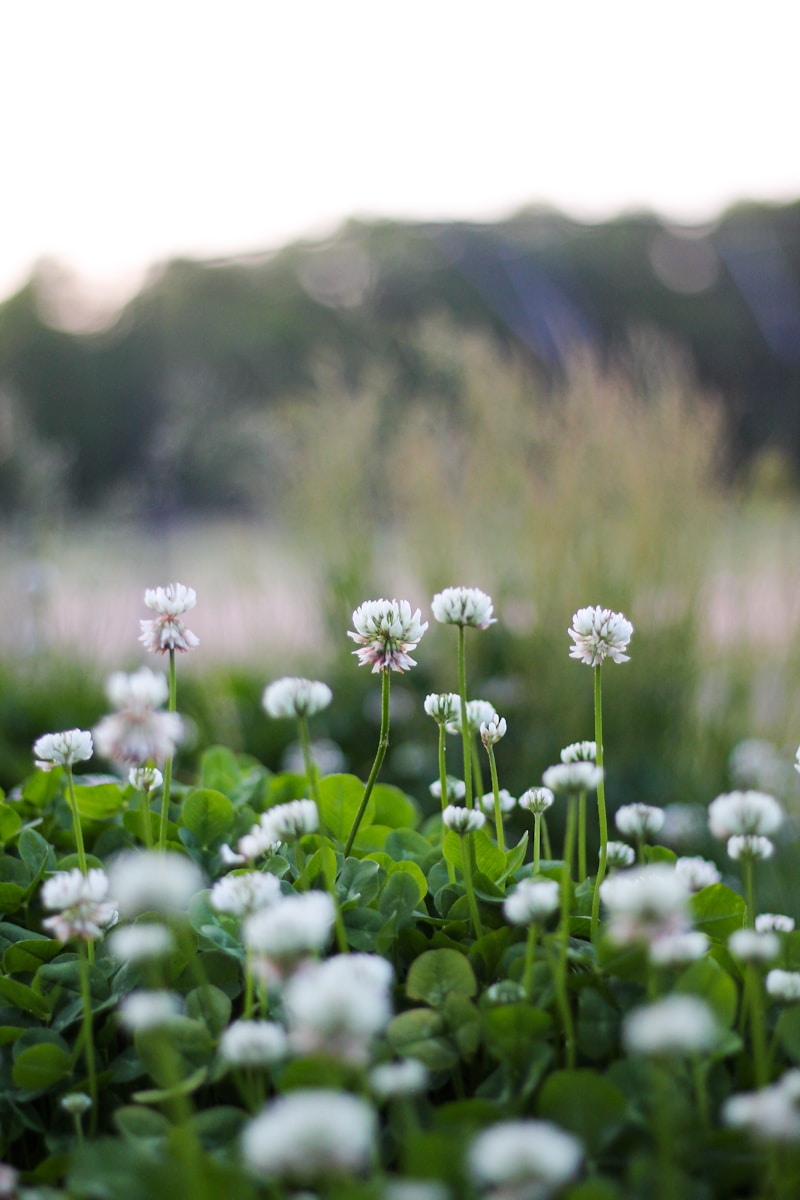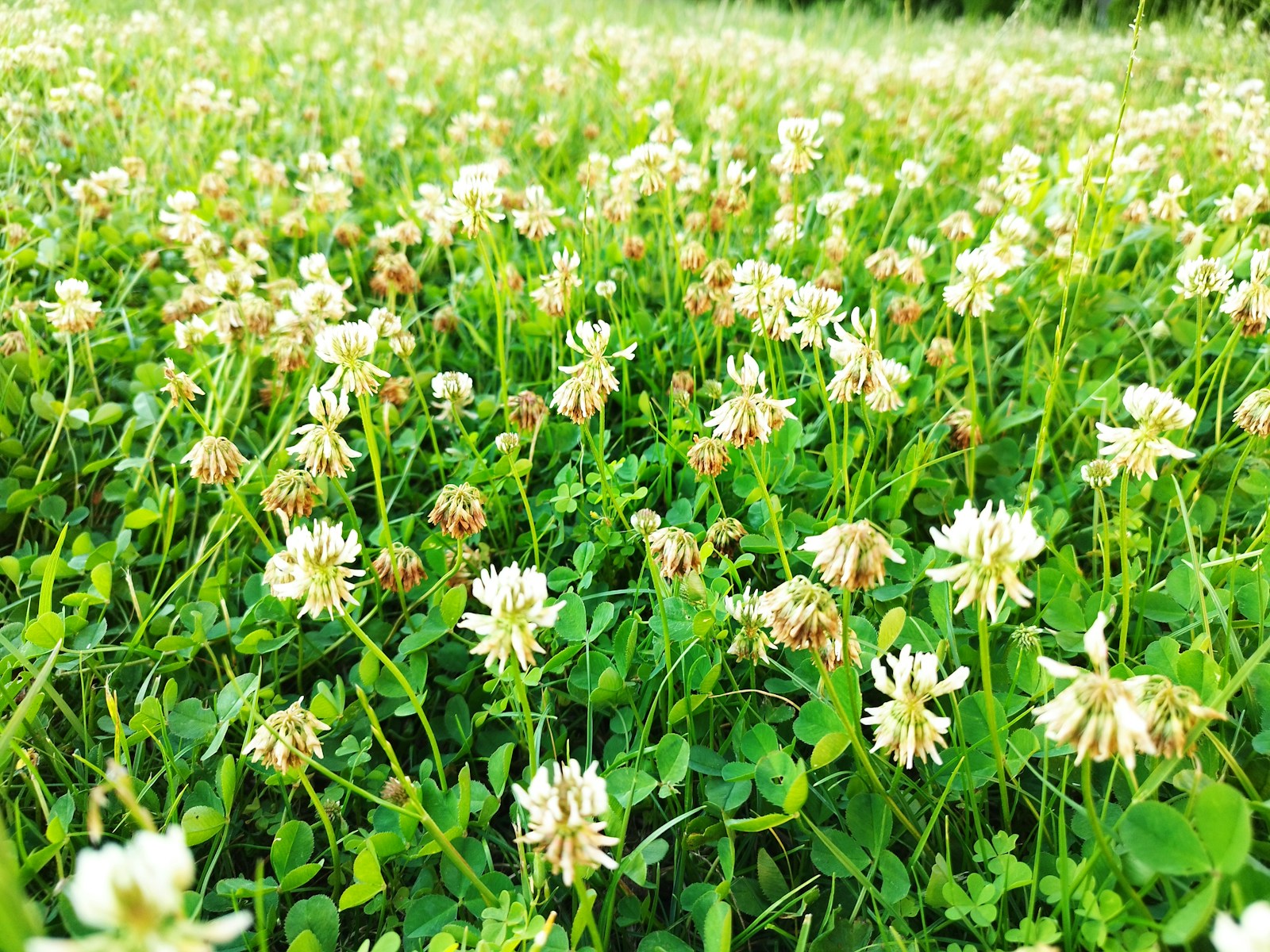Why Divide Coneflowers? Ecology, Aesthetics, and Legacy
Coneflowers (Echinacea) are ecological powerhouses, supporting over 25 species of native bees and butterflies. However, overcrowded clumps lead to diminished blooms, disease susceptibility (e.g., aster yellows), and “doughnut holes” where centers die out. Division every 3–4 years revitalizes plants, enhances airflow, and multiplies their role as pollinator hubs. A 2023 Mt. Cuba Center study found divided Echinacea purpurea produced 40% more blooms and attracted 3x as many pollinators as undivided plants.
For heritage gardeners, dividing rare varieties like Echinacea tennesseensis (Tennessee coneflower) preserves genetic diversity. Lena, a gardener in Austin, TX, rescued her ‘Baja Burgundy’ coneflowers by dividing them and donating offsets to the Lady Bird Johnson Wildflower Center. “These plants are living history,” she says.

When to Split Coneflowers: Timing, Regions, and Science
Optimal Windows:
- Early Spring: As shoots emerge (soil temps ~50°F). Cool, moist soil supports root recovery.
- Early Fall: 6–8 weeks before frost, allowing roots to establish pre-dormancy.
Regional Adjustments:
- Cold Zones (e.g., Vermont, Zone 4): Divide in April or early September. Use frost blankets if temps dip below 28°F.
- Hot Climates (e.g., Phoenix, Zone 9b): Split in February or late October. Shield divisions with 30% shade cloth.
- Humid Regions (e.g., Charleston, Zone 8b): Spring division avoids soggy fall soils; amend clay with 20% perlite.
Microclimates Matter:
- Urban heat islands (e.g., Chicago) warm soil earlier—adjust spring division by 1–2 weeks.
- Sloped gardens drain faster; prioritize fall division to leverage winter moisture.
Source: University of Vermont Extension
Tools, Soil Prep, and Mycorrhizal Magic
Essential Tools:
- Sharp spade or hori-hori knife: Clean cuts prevent root tearing.
- Soil thermometer: Ensure soil is >50°F for spring splits.
- Pruning shears: Sterilize with 10% bleach to deter aster yellows.
- Mycorrhizal inoculant (e.g., Glomus intraradices): Boosts root resilience.
Soil Prep:
- Test Soil pH: Coneflowers thrive in 6.0–7.0. Amend acidic soils with lime (1 cup per plant) or alkaline soils with sulfur.
- Drainage Fixes:
- Clay: Mix in 30% coarse sand + 20% compost.
- Sandy: Add peat moss to retain moisture.
Step-by-Step Guide to Dividing Coneflowers
- Pre-Dig Prep:
- Water deeply 24 hours prior.
- Trim foliage to 6” to reduce transpiration stress.
- Digging Technique:
- Circle the plant 10” from the base, angling the spade inward.
- Lift the root ball gently, preserving lateral roots.
- Root Surgery:
- Rinse roots to expose divisions.
- Split the crown into sections with 2–3 shoots and 4–6” roots using a sterilized knife.
- Discard woody centers or roots with black lesions (signs of rot).
- Replanting Protocol:
- Dig holes twice the root width. Add 1 cup compost + 1 tbsp mycorrhizal inoculant.
- Plant at original depth, spacing 12–18” apart (18–24” for large cultivars like ‘White Swan’).
- Post-Care:
- Mulch with 2” straw, keeping it 2” from stems.
- Water 1” weekly for 6 weeks. In windy areas (e.g., Denver), stake with bamboo.

Spring vs. Fall Division: Risks, Rewards, and Data
| Factor | Spring | Fall |
|---|---|---|
| Root Recovery | Rapid growth in mild temps | Roots strengthen pre-dormancy |
| Bloom Impact | May flower same year | Blooms delayed until next season |
| Disease Risk | Low (cool, dry conditions) | Moderate (fall rains) |
| Best Regions | Cool climates (e.g., MI, NY) | Hot/dry regions (e.g., NV, TX) |
Source: Colorado State University Extension
7 Common Mistakes (and Science-Backed Fixes)
- Dividing Too Small:
- Mistake: Single-stem divisions lack energy reserves.
- Fix: Ensure 2–3 stems with 4+ root nodes.
- Overwatering:
- Mistake: Soggy soil invites root rot (Phytophthora).
- Fix: Water only when the top 1” of soil is dry.
- Ignoring Soil Health:
- Mistake: Depleted soil stunts growth.
- Fix: Apply 2” compost annually.
- Late Fall Division:
- Mistake: Splitting <4 weeks before frost risks winter kill.
- Fix: Track frost dates via the National Weather Service.
- Tool Hygiene:
- Mistake: Dirty tools spread aster yellows.
- Fix: Soak tools in 10% bleach for 10 minutes.
- Wrong Depth:
- Mistake: Burying crowns >1” deep reduces blooms.
- Fix: Use a ruler to ensure crowns sit at soil level.
- Pesticide Overuse:
- Mistake: Harming pollinators like leafcutter bees.
- Fix: Treat aphids with 1 tbsp Castile soap + 1 quart water.
Troubleshooting: Pests, Diseases, and Recovery
- Aster Yellows: Remove and destroy infected plants (no cure).
- Japanese Beetles: Handpick at dawn or apply milky spore powder.
- Leggy Growth: Divide older clumps and relocate to sunnier spots.
- No Blooms: Test soil phosphorus—apply bone meal (0-10-0) in spring.
Sustainability and Community Impact
Dividing coneflowers reduces reliance on nursery plants, cutting plastic pot waste. The Homegrown National Park initiative encourages registering divisions as “native plant patches” to build wildlife corridors. In 2023, Portland, OR, volunteers planted 1,200+ divided coneflowers in parks, creating 3 monarch waystations.
Source: Homegrown National Park
Real-Life Success Stories
- Mt. Cuba Center’s 2021 Trial: Divided Echinacea pallida yielded 30% more blooms and 15+ pollinator species.
- Detroit’s Urban Revival: The Greening of Detroit nonprofit replanted 800 native coneflowers in vacant lots, boosting bee populations by 50% in 2 years.
FAQs
Q: Can I divide coneflowers in rainy seasons?
A: Yes, but ensure drainage. Use raised beds in areas like Seattle.
Q: How to store divisions if I can’t replant immediately?
A: Wrap roots in damp newspaper; store in a cool, dark place for ≤3 days.
Q: Do deer eat divided coneflowers?
A: Rarely—deer avoid coarse foliage. Use repellent if browsing occurs.
Final Thoughts
Dividing coneflowers merges horticulture with habitat restoration. Whether in snowy Minneapolis or sunny San Diego, this practice nurtures gardens that buzz with life. Sharpen your tools, embrace seasonal rhythms, and let your coneflowers thrive as ecological legacies.



